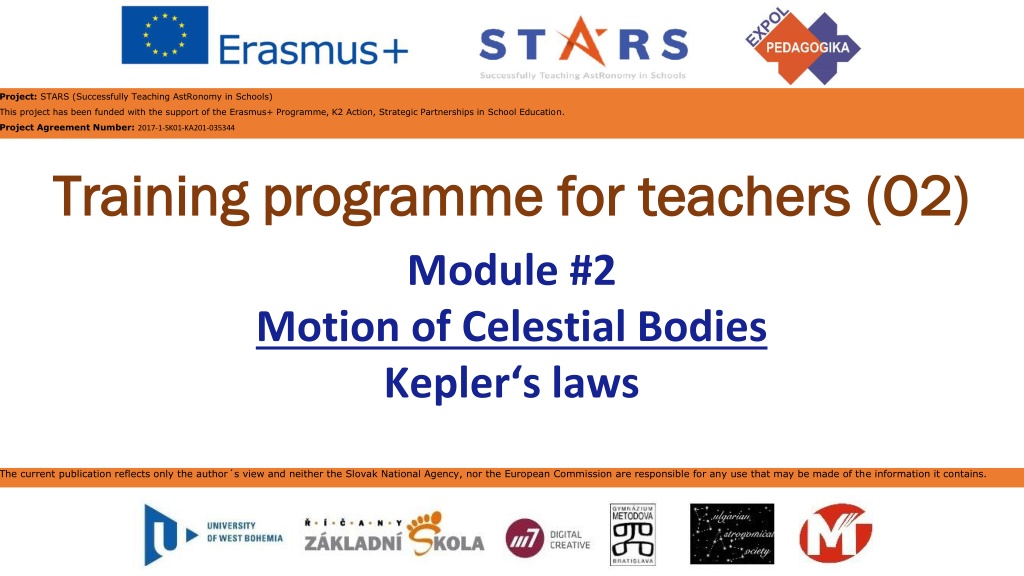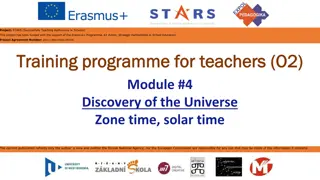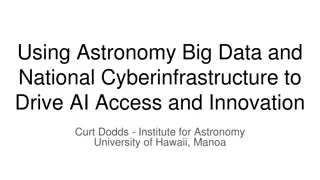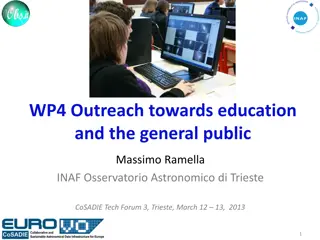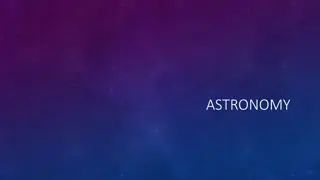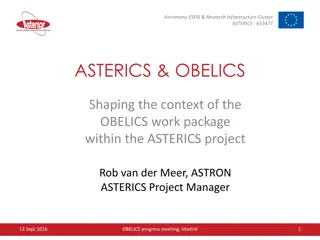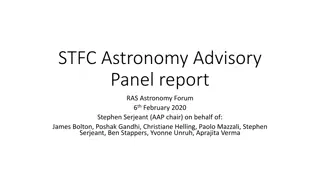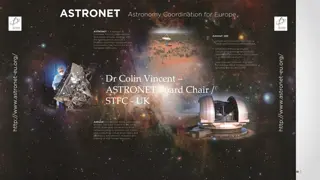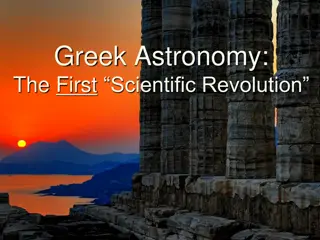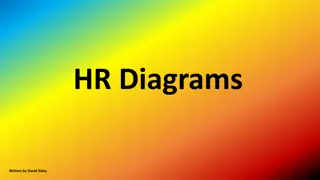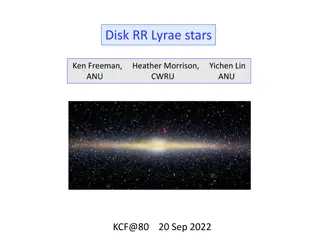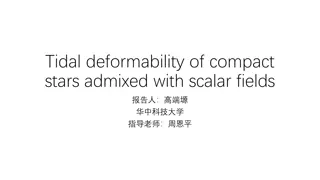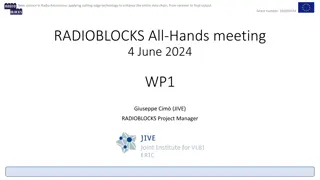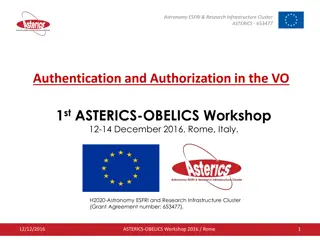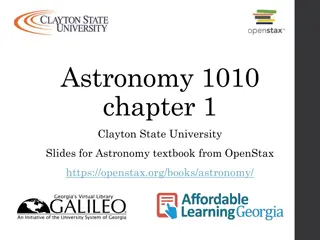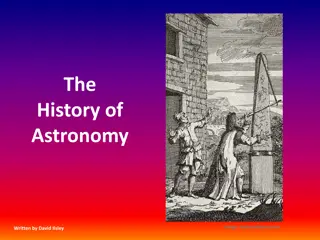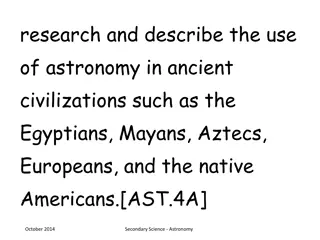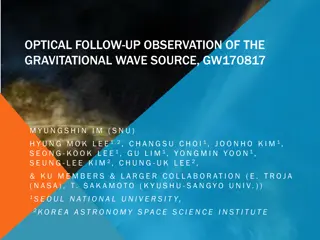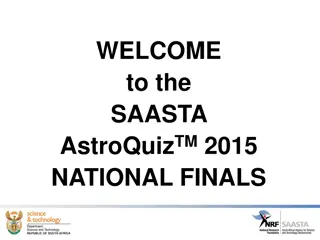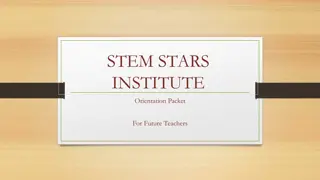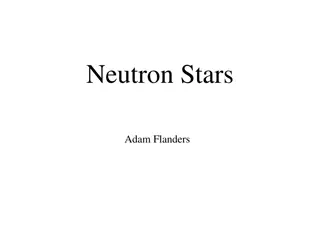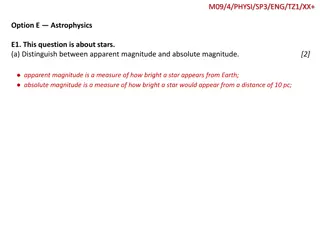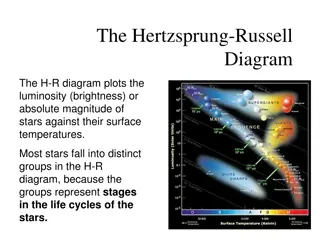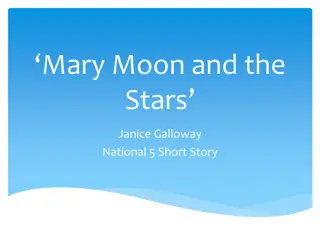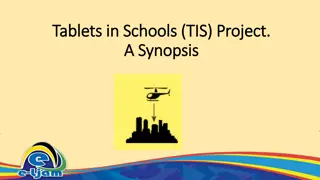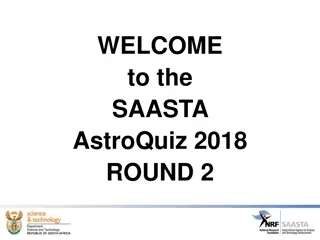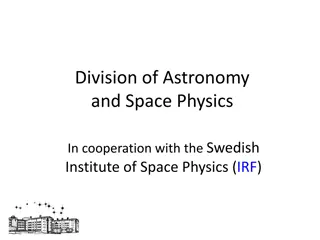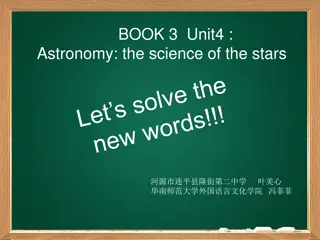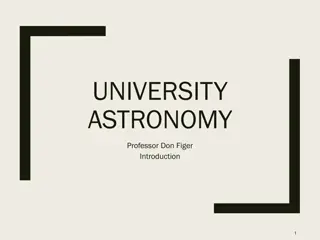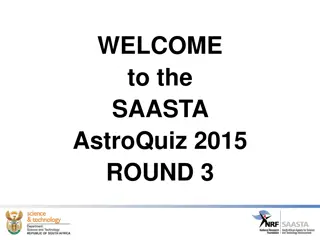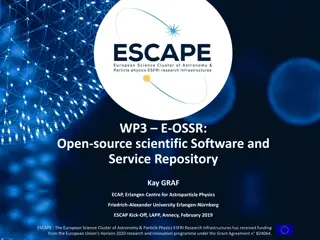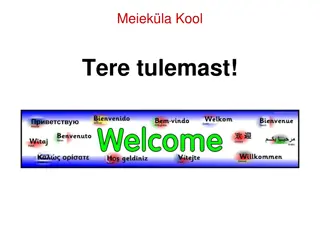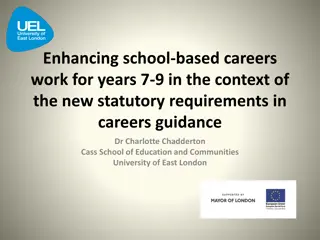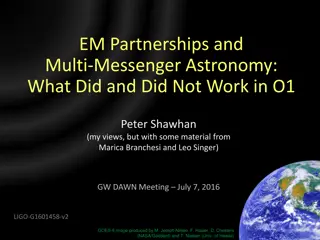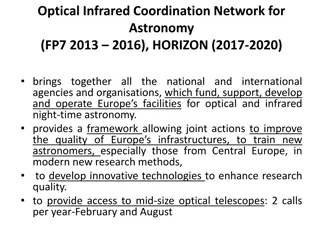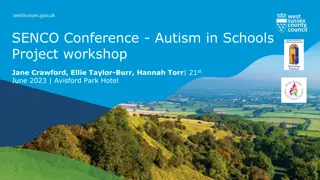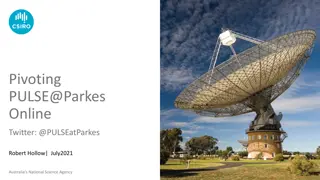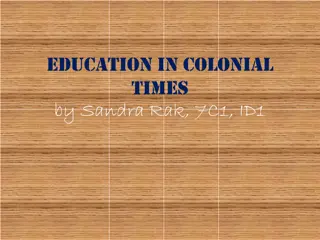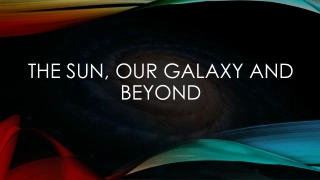Project STARS: Enhancing Astronomy Education in Schools
Explore the Project STARS initiative funded by the Erasmus+ Programme, focusing on teaching astronomy in schools. This project offers training programs, methodological handbooks, online platforms, and modules covering topics like celestial bodies' motion, Newton's law of gravitation, and more. Teachers can access theoretical information and practical exercises to enrich their astronomy lessons. Learn how to effectively utilize the provided materials and enhance your astronomy teaching skills with Project STARS.
Download Presentation

Please find below an Image/Link to download the presentation.
The content on the website is provided AS IS for your information and personal use only. It may not be sold, licensed, or shared on other websites without obtaining consent from the author. Download presentation by click this link. If you encounter any issues during the download, it is possible that the publisher has removed the file from their server.
E N D
Presentation Transcript
Project: STARS (Successfully Teaching AstRonomy in Schools) This project has been funded with the support of the Erasmus+ Programme, K2 Action, Strategic Partnerships in School Education. Project Agreement Number:2017-1-SK01-KA201-035344 Training programme for teachers Training programme for teachers (O2) Module #2 Motion of Celestial Bodies Kepler s laws (O2) The current publication reflects only the author s view and neither the Slovak National Agency, nor the European Commission are responsible for any use that may be made of the information it contains.
Project STARS introduction 1. STARS Methodological Handbook for Teachers ready-to-use resource for teachers 2. STARS Training Program for Teachers innovative and comprehensive approach 3. STARS Online Platform with examples of good practice and opportunities for discussions and exchange 4. STARS Concept for Astronomy Education Program International Online Conference 2020 project-stars.com The current publication reflects only the author s view and neither the Slovak National Agency, nor the European Commission are responsible for any use that may be made of the information it contains.
Project STARS modules #1 #2 #3 #4 #5 Constellations. Motion of Celestial Bodies. Newton's law of Gravitation. Discovery of the Universe. Solar System. #6 #7 #8 #9 #10 Galactic Neighbourhood. Sun and Stars. Our Galaxy and other galaxies. The Universe. Observatories. The current publication reflects only the author s view and neither the Slovak National Agency, nor the European Commission are responsible for any use that may be made of the information it contains.
Structure of the modules There are several topics in each module. Each topic contains: A brief introduction and key words; Theoretical part for the teacher - provides the basic information, necessary for the planning a lesson on that topic (and links to additional information in some cases). Practical exercises and activities for the students - ready for use in the classroom (in most cases) and with answers provided where applicable. The current publication reflects only the author s view and neither the Slovak National Agency, nor the European Commission are responsible for any use that may be made of the information it contains.
How to work with the materials 1 1. Carefully read the theoretical part for the teacher. 2. Should questions arise, look for answers in the supplementary materials , on the project s website (project-stars.com), or other internet sites. Attention! Make sure the information is reliable! 3. Prepare the theoretical part of your lesson. The current publication reflects only the author s view and neither the Slovak National Agency, nor the European Commission are responsible for any use that may be made of the information it contains.
How to work with the materials 2 4. Read carefully the practical exercises and their answers. 5. Should questions arise, look for answers in the supplementary materials , on the project s website (project-stars.com), or other internet sites. Attention! Make sure the information is reliable! 6. Depending on the theoretical content of your lesson, choose appropriate practical activities to use. You can look for additional exercises in the supplementary materials or at the webpage of the project (project-stars.com), or other internet sites. Attention! Make sure the information is reliable! The current publication reflects only the author s view and neither the Slovak National Agency, nor the European Commission are responsible for any use that may be made of the information it contains.
How to work with the materials 3 7. Keep in mind that some of the activities require materials that should be available during the lesson. 8. We recommend you try out the activities yourself before presenting them in the classroom. Based on yours students ages and abilities, you might need to modify the activities (either to make them easier or more difficult). However make sure to keep them correct in terms of physics. 9. You can give parts of, or whole exercises as homework. The current publication reflects only the author s view and neither the Slovak National Agency, nor the European Commission are responsible for any use that may be made of the information it contains.
dule 2 content 2.1 Kepler s laws Power and root, ellipse, centripetal force. The current publication reflects only the author s view and neither the Slovak National Agency, nor the European Commission are responsible for any use that may be made of the information it contains.
Theoretical contents 2.1 Kepler s laws History of discovery; power and root; ellipse and its description; Kepler s laws. The current publication reflects only the author s view and neither the Slovak National Agency, nor the European Commission are responsible for any use that may be made of the information it contains.
List of Practical activities 2.1.1 2.1.2 Alien vs. earthling Light as supermassive black hole! The current publication reflects only the author s view and neither the Slovak National Agency, nor the European Commission are responsible for any use that may be made of the information it contains.
Practical activity: 2.1.1 Task IV: Alien vs. earthling Methodical part: Using 2nd a 3rd Kepler s laws calculate parameters of comet trajectory. Materials and tools: Calculator Procedure: Pupils calculate parameters of comet trajectory. The current publication reflects only the author s view and neither the Slovak National Agency, nor the European Commission are responsible for any use that may be made of the information it contains.
Practical activity: 2.1.1 Task IV: Alien vs. earthling comet period (3rd KL) semi-major and semi- minor axes, linear and numerical eccentricity of ellipse ? = ? 3 64 ? = ? ? = ? 1 rok 64 let ? = 2 ?3 ?? 2,03 109s 64 let b (1st KL) afelium = 31.5 au e a perihelium = 0.5 au how many times the comet in perihelion has a higher speed than in aphelion ? =??+ ?? = 16 au 2 ? = ?? ? = ? ??= 15,5 au (2nd KL) ?? ?? =?a =? + ? ? ?=1 + ? ? = ?2 ?2 4,0 au 1 ? 63 ?p The current publication reflects only the author s view and neither the Slovak National Agency, nor the European Commission are responsible for any use that may be made of the information it contains.
Practical activity: 2.1.2 Task X. Light as ... supermassive black hole! Methodical part: Work with graph and angular distances, 3rd Kepler s law application to calculate mass of supermassive black hole. Materials and tools: Calculator, rule Procedure: Pupil calculate mass of supermassive black hole from real parameters of star trajectory. The current publication reflects only the author s view and neither the Slovak National Agency, nor the European Commission are responsible for any use that may be made of the information it contains.
Practical activity: 2.1.2 Task X. Light as ... supermassive black hole! S2 star in distance from Earth l = 25 900 ly star orbital period T = 16 years = 0,09 (from graph) l = 25 900 ly ~ 1,64 109au ? 3 ? 2= ? 2 106 tg ? = ? a ~ 795 au ? M ~ 2 106MS ?poz sin133 = ?poz cos43 795 au i = 133 ? = cos43 1 090 au M ~ 5 106MS The current publication reflects only the author s view and neither the Slovak National Agency, nor the European Commission are responsible for any use that may be made of the information it contains.
Conclusions, results check 1 Feed Forward: Base your plans for the next lessons on the results of the pupils: Difficulty of the lessons: depending on pupils comprehension of the material and level of completion of the activities. Preparation: Clear and well appointed goals of the lesson and activities. When the goal is well understood, the attention towards a task/material is easier and more effective. Approach toward the material: What would be the correct approach that would help the student comprehension and activity completion. The current publication reflects only the author s view and neither the Slovak National Agency, nor the European Commission are responsible for any use that may be made of the information it contains.
Conclusions, results check 2 Self-evaluation: self-discipline, steering and control of the activities. Individual approach: Individual approach and guidance. Check: How did I do? Individual evaluation of the pupil s work, pertaining to the specific activity and goal. Must contain information about the advance (or lack of) the pupil has made and to guide them to achieve the goals and standards. The current publication reflects only the author s view and neither the Slovak National Agency, nor the European Commission are responsible for any use that may be made of the information it contains.
